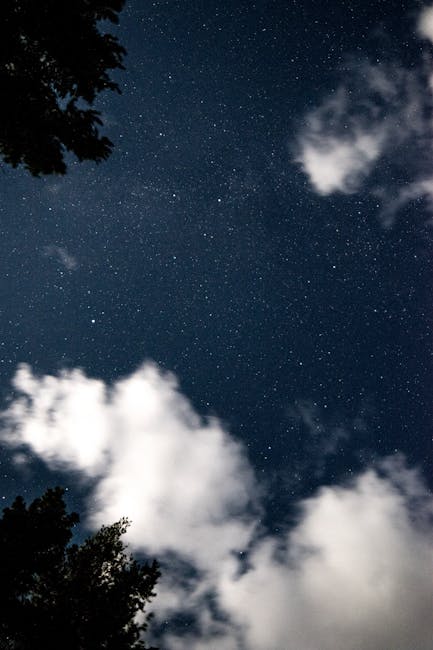25 Most Beautiful Destinations in Europe

From Scandinavia’s striking snow-coated sceneryto the charming coastlines of the Mediterranean, Europe is full of diverse and dreamy. Landscapesthat belie its relatively small size, While itsworld-class capitals of London, Paris and Rome attract the most visitors, thecontinent’s 44 countries. Each have delightfullydifferent cities and attractions to explore.With. So many sublime sightsand sensational scenery to see visiting all of Europe’s most beautifuldestinations could take a lifetime Number 25 Picos de Europa
Made up of three majestic massifs, the Picosde Europa is a beautiful mountain range thatlies in the far north of Spain, The’Peaksof Europe’ and the surrounding national parkboast astonishing scenery with phenomenalpanoramas wherever you go.
The parks, highmountains and deep ravines appeal to hikers, who need to be alert for deep fog banks. Thisbiosphere reserve also boasts forests. Oak grovesand, several rivers Non-hikers, may want to ridethe cable car that reaches more than a mile abovesea level providing stunning views of the park.
Number 24 Seljalandsfoss.One of the most beautiful waterfalls in the wholeof, Iceland Seljalandsfoss, is also one of itsmost popular. This is in large part, because youcan walk behind its cascading curtain of water.While. This makes for some incredible photos. Thefalls are just as marvellous to view from in frontas. They gush off the top of a 60 meter high cliff
Located just off the renowned Ring Road in thesouth of the island, Seljalandsfoss is not tobe missed out on for its scenic settingand unique and unusual cave viewpoint.
Number 23. Seven Rila LakesNestled among the rearing Rila mountain range, theSeven Rila Lakes are one of the most picturesqueplaces to visit in Bulgaria. Set in the southwestof the country, the seven lakes sparkle in the sunand are connected by a small series of streams,cascades, and waterfalls. Each lake is namedafter its defining characteristic, so aftervisiting the clear waters of ‘The Tear,’ youcan stop by the oval-shaped shores of ‘The Eye.
‘Lying at more than 2,000 metres above sea level,the lakes are surrounded by magnificent mountainswith fantastic viewpoints dotted here and there.
Number 22. Venice. One of the world’s mostromantic and resplendent cities, Venice is likeno other place on Earth, with astounding art andarchitecture wherever you look. Located inthe northeast of Italy, the ‘Floating City’is set across 118 small islands, linked bycharming canals and beautiful old bridges.
Lining its wonderful waterways are magnificentmarble-coated palaces, and centuries-old churches,with countless other historic landmarksand cultural sights dotted here and there.Exploring Venice’s atmospheric alleys, prettypiazzas, and idyllic islands is always a treat. Number 21. Scottish Highlands.The Scottish Highlands form a rugged, mountainousregion of Northern Scotland.
There are many thingsto do in amongst the dramatic scenery of thispicturesque area. Theres Glencoe Valley wherered deer roam and waterfalls hide; close to here,Ben Nevis calls with the highest mountain peak inthe United Kingdom. Elsewhere, Loch Ness sits inthe Central Highlands and is where you can tryto catch a glimpse of the legendary Loch NessMonster, or simply take a stroll and enjoy theserene atmosphere. The Scottish Highlands are alsohome to Inverness, the largest city in the region. Number 20.
Transfagarasan Highway.Winding its way through the Carpathian Mountains,the Transfagarasan Highway is widely consideredone of the most spectacular and scenic drivesin the world. Built between 1970 and 1974 as astrategic military route, the road runs through anumber of high mountain passes and river valleysin the centre of Romania.
Due to its hair-raisinghairpin turns, its steep and sharp descents,and stunning scenery, the highway isvery popular to cycle or drive along. Number 19.
Madeira.Surrounded by the wild waters of theAtlantic Ocean, the spectacular sub-tropicalarchipelago of Madeira lies some thousandkilometres or more off mainland Portugal.Often called the ‘Garden Island’ due to itsunspoiled nature, it boasts breathtaking scenery,with mighty mounts and coastal cliffs liningits scenic sun-kissed shores. While sailing,surfing, and scuba diving aroundthe islands are popular activities,there are also some great beaches and townsto check out. In addition, the archipelago iscrisscrossed by a wonderful series of hikingtrails with astounding views over the ocean.
Number 18. Lapland.Located far north in the Arctic Circle, the winterwonderland of Lapland straddles the snow-coated,frozen expanses of Finland, Sweden, Norway,and Russia.
Full of endless forests,glacial lakes, and glinting icefields, the picturesque polar regionis magical to explore. Hiking, skiing,and dog-sledging are all popular.
Staying in a cosy cabin in the woods orone of its scenic, snow-covered towns isan excellent way to experience the best ofLapland. To top it all off, no visit to theland of Santa Claus can be complete withoutcatching a glimpse of the Northern Lights. Number 17. Pulpit Rock.One of the most famous andphenomenal sights in Norway,the prominent Pulpit Rock lies in the southwest ofthe country, overlooking the lovely Lysefjorden.
Formed during the last ice age, the sheercliff towers 604 metres above its surroundings,with staggering views of the deep, darkwaters and dramatic landscapes below. Dueto the outstanding beauty, Pulpit Rockattracts hordes of tourists every year. Number 16. The Dolomites.Home to sweeping valleys, alpine meadows,and jaw-dropping peaks, the Dolomites area majestic mountain range lying in the northeastof Italy.
Straddling several different regions,the ‘Pale Mountains’ are one of the most popularand picturesque places to visit in the country,with lots of great hiking paths and skiing pistesto be found amidst its spectacular landscapes.Standing at 3,343 metres, Marmalada is itshighest park.
Whether summer or winter,the Dolomites are delightful to visit due totheir stunning scenery and epic panoramas. Number 15. Korcula Town.
Bordered by beautiful blue waters and lushforests, with mountains rising in the distance,Korcula Town is certainly set in a scenic spot.Lying at the eastern-end of the island of Korcula,it boasts an attractive and alluring OldTown, full of exquisite Renaissance and Gothicarchitecture. Enclosed within its imposingfortifications are centuries-old churches,Venetian palaces, and atmospheric alleys, aswell as a charming waterfront. In additionto its pleasant historic centre, KorculaTown lies near some brilliant beaches ifyou want to take a dip in the warm andinviting waters of the Adriatic Sea. Number 14.
Kravica Waterfalls. Located in the south of Bosnia and Herzegovina,the Kravica Waterfalls are a gorgeous set of fallshidden away among the craggy karst landscape.Towering 25 metres in height, the gentle cascadesspan 120 metres in length.
Powerful jets of watergush between the dense green overgrowth thatthreatens to engulf the lovely pool below.Due to their peaceful nature and breathtakingbeauty, Kravica Waterfalls is a popular day tripfrom Mostar and Dubrovnik, with swimming andpicnicking to be enjoyed in the summer months.
Number 13. Faroe Islands.Youll need at least a week to explore allthe captivating attractions the 18 volcanicFaroe Islands have to offer. Just a short flightfrom mainland Europe, the island country has beenassociated with the Kingdom of Denmark, but it isactually self-governed. What makes the archipelagoso special is that its incredibly underratedand untouristy.
Did you know that you can see theNorthern Lights here from November to February?Apart from its spectacular scenery of majesticvalleys, remote villages, and jaw-droppingwaterfalls, its also a popular spot for natureenthusiasts seeking a glimpse of thousands ofcoastal birds, including clifftop puffin colonies.


Number 12. Bay of Kotor. A sweeping bay in the eastern Adriatic Sea,the Bay of Kotor is situated in southwesternMontenegro.
Its a beautiful spot ringed byjagged green hills and medieval towns, withred-roofed houses spilling down to the coastline.Best explored by car along its winding roads,the region is packed full with incrediblesights from old citadels to islands topped withmonasteries. Theres plenty of chances for seafoodand delicious dinners by the sea to complementthe scenery. Kotor old town is a Venetian wonder,surrounded by walls with a mountainbackdrop thats well worth using as a base. Number 11.
Tulip Fields in Holland. Stretching endlessly into the distance,the Netherlands’ colourful tulip fields areone of its most evocative sights. Ever sincethe late 16th century, when the beautiful bulbsfirst arrived and ‘tulip mania’ struck Europe,visitors have been attracted to its fantasticflowerbeds and lavishly landscaped gardens. Byfar the biggest and best of its flower parks isKeukenhof, home to around seven million tulips,daffodils, and roses. Cycling around Holland’sfetching fields is a delight, with loads ofgreat photos to be had of pretty purple,orange, and red flowers waving in the wind.
Number 10. Verdon Gorge.With its blindingly bright white limestonewalls and its twinkling turquoise waters,Verdon Gorge certainly makes for a beautifulsight. Located in the southeast of France, theravine stretches more than 25 kilometres in lengthand at times drops to a depth of 700 metres.Sometimes billed as the ‘Grand Canyon of Europe’,its epic landscapes lend themselves perfectlyto all kinds of outdoor activities, withhiking and kayaking particularly popular.
Number 9. Meteora.Meaning elevated in Greek, Meteora is ajutting rock formation in Northern Greece awild landscape made up of hill-like boulders thatdominate the skyline.
Part of what makes thatmagnificent landscape so amazing, however, are themonasteries that precariously cling to the rocks.Set on cliffs with staircasescut into the very stone itself,this religious site datesback to the 15th century,and some still welcome visitors to this day.
Themost famous of all, the Holy Trinity Monastery,perches an amazing 400 meters atop a natural rocktower and is a breathtaking sight to set eyes on.
Number 8. Lake Bled.Set in Northwest Slovenia close to the town ofBled is a gleaming emerald lake surrounded bystunning verdant hills. Catch one of theold wooden boats over to the small BledIsland in the middle of the lake.
The islandis home to the Church of the Assumption ofMary a 17th-century building with some15th-century gothic frescoes still intact.Around this incredibly picturesque spot, theresalso Bled Castle, but one of the best things to doin the area is to simply stroll around the lakeand take a break for a swim in the calm waters.
Number 7. Sintra.Home to grand castles, palaces and historicvillas, Sintra is a fabulous place to visit;it lies just 30 kilometres to the northwestof Lisbon.
Due to its spectacular scenery,it was here that generations of Portugueseroyals erected extravagant edifices atopsoaring hills and mountains. Besides the romanticarchitecture of the Sintra and Pena Palaces,there are also lovingly landscaped gardensand luxury estates for visitors to explore,as well as the crumbling Castle of the Moors. Number 6. Hallstatt.Often called the ‘Pearl of Austria’, Hallstattlooks every bit the fairytale town due to itsspectacular setting and outstanding naturalbeauty.
Perched between majestic mountainsand a looking-glass lake, the picturesque,pastel-coloured town tumbles down to thereflective waters below. Widely considered theoldest still-inhabited settlement in Europe, ithas long been known for its salt deposits; variouscaves and mines can be visited from the town.Although usually quite crowded, ambling aroundscenic streets and atmospheric alleys beforeemerging at Hallstatt’s divine waterfront withits sensational views is a magical experience.
Number 5. Santorini.
The volcanic island of Santorini is probablyone of the most recognized islands on Earth.Characterized by its whitewashed and blue-domedCycladic towns hugging the caldera cliffs abovethe edge of the Aegean, this Greek islandis world-famous for its enviable sunsets.Stroll through the alleyways of Oiatown, wine and dine at gourmet tavernas,relax on the volcanic beaches, or sail off intothe sunset on a glamorous catamaran cruise.As its one of Greeces most expensive islands,youll undoubtedly rub shoulders with the richand famous.
For its views and Mediterraneanclimate alone, Santorini is something special.
Number 4. Lofoten Islands. Rising dramatically from the sea,the Lofoten Islands’ rugged peaks, plungingfjords, and scenic beaches and coves make foran impressive sight. Located just off thenorthwest of Norway, the attractive archipelagois home to sheep-filled fields and untouchedlandscapes, with sheltered bays and sleepyfishing villages dotted about. Connected to themainland by tunnels and bridges, the islands arefascinating and photogenic to explore, withhiking, cycling and sailing all popular.
TheLofoten Islands are also a great place to watchthe marvellous Aurora Borealis light up the skies. Number 3. Fussen.Lying in the far south of Bavaria,the enchanting Fussen is set in alovely spot at the foot of the Alps; it isthe last stop on Germany’s Romantic Road.While its well-preserved historic centre ispleasant to explore, the town is mostly knownfor the three fabulous fairytale castles that liein the surrounding hills and mountains.
Of these,the undoubted highlight is Neuschwanstein themagical palace that was the inspiration behindWalt Disney’s Sleeping Beauty Castle. Besidesits impressive historical sights, Fussen also haslots of excellent hiking trails that offer superbviews of the nearby mountains, lakes and forests. Number 2. Amalfi Coast.Located just to the south of Naples is theAmalfi Coast – one of Italy’s most alluring andattractive stretches of coastline.
Rising steeplyabove the sparkling waters of the Mediterraneanare rugged cliffs and stunning mountains,with idyllic towns and villages dotted about.As well as boasting beautifulscenery and gorgeous landscapes,there are also the pastel-colouredpalaces and piazzas of Positano,Amalfi and Ravello to explore. Whetherlounging on a beach, hiking in the hills,or sailing along its sun-kissed shores, thebeauty of the Amalfi Coast is undeniable.
Number 1. Lauterbrunnen Valley.
Lined by magnificent mountains, glintingglaciers, and an astonishing 72 waterfalls,Lauterbrunnen Valley is picture-perfect. Dottedaround its picturesque pastures and alpine meadowsare cosy chalets and charming mountainvillages, such as those of Lauterbrunnen,Murren, and Wengen. Framed bysheer cliffs and sparkling falls,the valley is a nature lover’s dream, withlots of hiking trails, mountain bike paths,and rock climbing routes to explore. Itsoutstanding beauty and spectacular scenerymake Lauterbrunnen Valley one of the mostmemorable places to visit in Switzerland..
Read More: Most AMAZINGLY Beautiful Places In Southeast Asia!








